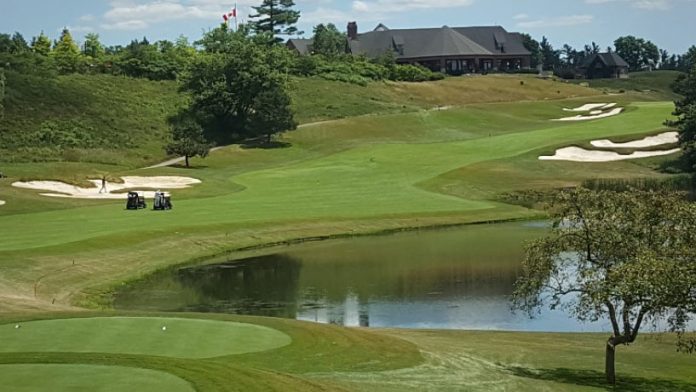
Canada’s top fairways could soon be driveways.
The National Golf Club of Canada, a male-only private course in the Toronto suburbs, recently drew an unsolicited buyout offer for about $120-million from a real estate developer. The property is owned by its 468 members and consistently ranks as one of the two or three best and toughest rounds in the country, and among the world’s top 50 courses. After the 44-year-old club closes for the winter, members will make a decision on its future. If they decide to sell, the National will join a growing list of urban golf courses being bulldozed to make way for high-end homes.
“Redevelopment of the National would leave a scar on every golf course in the country,” said Rob Roxborough, the National Golf Club’s executive director. “If the National is vulnerable, who isn’t?”
The debate playing out at the limestone-clad clubhouse and ravine-riven fairways of what golfer’s call “the Nash” is part of a larger conversation around the relevance of golf for the next generation, particularly for affluent players who can afford to join a private country club. The club’s struggle also captures what demand for single family homes and parkland is doing to public and private courses across the country.
The most recent statistics from Golf Canada, the sport’s national governing body, show 51 courses shut down between 2015 and 2018, including 19 closures in Ontario. In the same period, 22 new courses were either launched or under construction. In other words, two clubs are closing for every new track that opens.
“Golf has never been in a healthier place in Canada,” in terms of the number of players and their engagement in the game, said Laurence Applebaum, chief executive officer of Golf Canada. “But there are two sides to the coin. Golf courses have become part of the story of a robust real estate market, particularly in the greater Toronto region.”
There are about 2,300 golf courses in Canada – only the United States has more – and none are harder to navigate than the National in Woodbridge, Ont. Its 18 holes feature narrow fairways, ponds, streams and greens guarded by cleverly-placed bunkers. Pros such as Mike Weir, Nick Faldo and Lee Trevino have sung the National’s praises after playing tournaments, legions of golf writers have complimented the course’s ability to humble even the best players. But the difficulty of the course and its prime location are now contributing to its uncertain future. When noted golf architects George and Tom Fazio designed the National, which opened in 1974, it was well north of Toronto’s suburbs. Over more than four decades, the city swallowed the club. Large homes now surround the course, while shopping malls, Canada’s Wonderland amusement park and a subway station are minutes away.
In recent years, an increasing number of National members decided to unload their stakes, in part because aging golfers often find the course too challenging to play enjoyably. Not enough new members stepped forward and there are currently more sellers of memberships than buyers, according to Roxborough, who declined to comment on the exact numbers. Several sources at the National, whom The Globe And Mail granted confidentiality to because they were not authorized to speak for the club, said dozens of members are currently trying to sell their stakes, which typically change hands for around $40,000. Annual dues at the club are about $12,000.
That dynamic opened the door to an offer this summer from a opportunistic developer. Roxborough declined to identify the bidder, but said when board of directors received the offer, National promptly hired a real estate appraiser to value the property. The consultant’s report is expected by December and will be shared with members, who will then decide whether they want to sell. The club’s men-only membership policy is not a factor in the debate over the National’s future, according to the club’s executives and a number of members. Roxborough said: “The issue here is urban sprawl.”
For a sense of what may be coming at the National, look to what played out five years ago at member-owned York Downs Golf and Country Club in nearby Markham. A developer made an initial $325-million bid for the 27-hole course. The club’s board opted to put the property up for auction. The club eventually sold for $412-million, which worked out to approximately $200,000 per member, a decent payday for owners who typically paid $30,000 or less for their stakes. Next year, builders are scheduled to break ground on the first of 2,400 planned detached homes and townhouses on the site.











